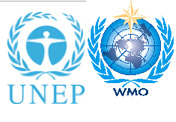The UN Environment Programme (UNEP) and the World Meteorological Organization (WMO) have published ‘Twenty Questions and Answers About the Ozone Layer,' which complements the 2014 Scientific Assessment Report of Ozone Depletion.
The publication aims to enhance understanding regarding the relationship between ozone depletion, ozone-depleting substances (ODSs) and the Montreal Protocol.
Many of the questions and answers are updated versions of those presented in previous Ozone Assessments, and some have been elaborated upon, to address emerging issues.
 5 May 2015: The UN Environment Programme (UNEP) and the World Meteorological Organization (WMO) have published ‘Twenty Questions and Answers About the Ozone Layer,‘ which complements the 2014 Scientific Assessment Report of Ozone Depletion. The publication aims to enhance understanding regarding the relationship between ozone depletion, ozone-depleting substances (ODSs) and the Montreal Protocol. Many of the questions and answers are updated versions of those presented in previous Ozone Assessments, and some have been elaborated upon, to address emerging issues.
5 May 2015: The UN Environment Programme (UNEP) and the World Meteorological Organization (WMO) have published ‘Twenty Questions and Answers About the Ozone Layer,‘ which complements the 2014 Scientific Assessment Report of Ozone Depletion. The publication aims to enhance understanding regarding the relationship between ozone depletion, ozone-depleting substances (ODSs) and the Montreal Protocol. Many of the questions and answers are updated versions of those presented in previous Ozone Assessments, and some have been elaborated upon, to address emerging issues.
As a result of broad compliance with the Montreal Protocol, as well as industry’s development of ‘ozone-friendly’ substitutes for controlled chemicals, the publication notes, total global accumulation of ODSs has slowed and begun to decrease, and ozone layer recovery is expected by the middle of the 21st century, as long as compliance continues.
The questions in the publication focus on: the nature of atmospheric ozone; the chemicals that cause ozone depletion; how global and polar ozone depletion occur; the extent of ozone depletion; the success of the Montreal Protocol; and the future of the ozone layer. Computer models project that the impact on the ozone of greenhouse gas (GHG) emissions and climate change will increase significantly and surpass the importance that ODSs have had on ozone in most atmospheric regions by the end of this century.
Ozone and climate are indirectly linked because both ODSs and their substitutes are GHGs and contribute to climate change. For example, the Antarctic ozone hole has a direct impact on the surface climate in the Southern Hemisphere during the summer.
The answers to the questions are based on information presented in the 2014 report, as well as previous assessment reports and other scientific assessments. The assessment reports are conducted under the auspices of WMO and UNEP, and are co-sponsored by the US National Aeronautics and Space Administration (NASA), the US National Oceanic and Atmospheric Administration (NOAA), and the European Commission. [WMO Press Release] [Twenty Questions and Answers About the Ozone Layer] [IISD RS Story on 2014 Scientific Assessment]